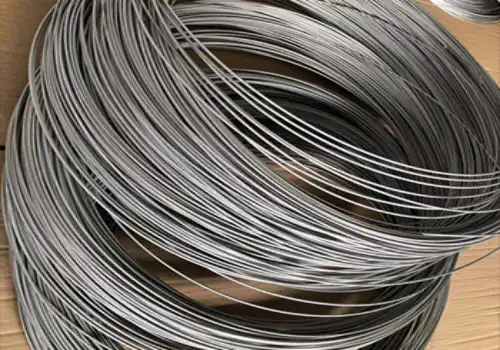In the field of precision medical device manufacturing, medical nickel-titanium wire has become an indispensable material with its unique shape memory effect, superelasticity, excellent biocompatibility, and corrosion resistance. Especially in the manufacture of complex medical interventional devices such as heart stents and vascular interventional guidewires, medical nickel-titanium wire plays a key role. Laser welding technology, with its high precision, high efficiency, and low impact characteristics, is gradually becoming the preferred process for welding medical nickel-titanium wire.

Laser welding technology: a tool for precision welding
Laser welding technology uses a high-energy-density laser beam to achieve rapid heating and melting of the joints of medical nickel-titanium wire by precisely controlling its focal position and power output. This process not only ensures the flatness and beauty of the weld but also achieves micron-level welding accuracy, perfectly retaining the fine structure of the nickel-titanium wire. At the same time, the rapid heating and cooling characteristics of laser welding effectively reduce the heat-affected zone, avoid the decline of material properties, and ensure the quality and stability of the welded joint.
Process advantages: improve quality and reduce costs
High precision and low deformation: The accuracy of laser welding ensures the integrity of the medical nickel-titanium wire structure, reduces deformation and stress concentration during welding, and improves the overall quality of the product.
Efficient production: The high-speed characteristics of laser welding significantly shorten the production cycle, improve production efficiency, and meet the growing needs of the medical device market.
Low impact zone: A small heat-affected zone means less interference with material properties, which is conducive to maintaining the excellent performance of nickel-titanium alloys and extending the service life of products.
Clean and pollution-free: The non-contact processing method avoids mechanical damage and pollution problems in traditional welding, ensuring the cleanliness and safety of medical nickel-titanium wire.
Quality assurance: strict testing to ensure safety
After laser welding is completed, a series of strict quality inspection methods, including weld appearance inspection, size measurement, strength testing, etc., are used to ensure that the weld quality meets the high standards and strict requirements of the medical device industry. This is not only responsible for product quality, but also a commitment to patient safety.
Looking to the future: Broad prospects for laser welding technology in the medical field
With the continuous advancement of medical technology and the continuous expansion of the medical device market, laser welding technology will play an increasingly important role in the production of medical nickel-titanium wires. In the future, with the continuous innovation and development of laser welding technology, we have reason to believe that it will show its unique charm and value in more medical fields and contribute more to human health.





